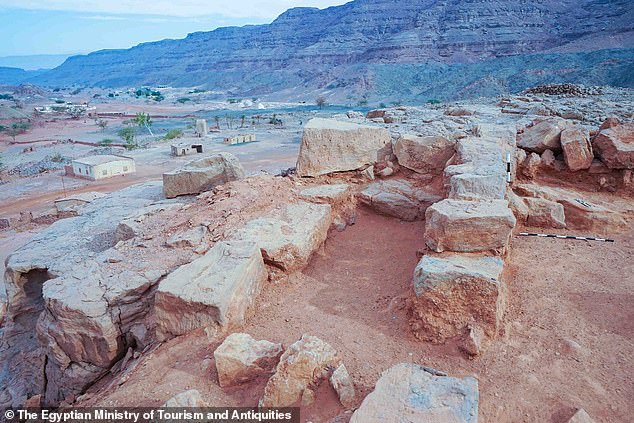An ancient workshop unearthed in Egypt may offer new evidence for the Bible’s story of Moses.
Researchers discovered a copper smelting workshop, multiple ancient buildings and observation points at the Wadi al-Nasb site in South Sinai.
Inside the workshop, the team found a furnace for melting copper, tools for preparing raw materials, clay crucibles, pottery vessels and large amounts of copper slag.
The site lies near the ancient mining area of Serabit el-Khadim, historically known for turquoise and copper extraction.
Researchers emphasized the historical significance of the workshop, showing that ancient Egyptians possessed advanced knowledge of mining and metal-making, essential for tools, weapons, and crafts.
The location is also close to areas traditionally associated with the Exodus route, including Mount Sinai.
Although archaeologists have not directly linked the ruins to Moses or the Israelites, biblical scholars note that Hebrew or Israelite workers historically labored in Egyptian mining operations, and proto-Israelite inscriptions have been found at Serabit el-Khadim.
According to the Book of Exodus, Moses led the Israelites out of slavery in Egypt, wandering through the Sinai Desert for 40 years and receiving the Ten Commandments at Mount Sinai.

The Egyptian Ministry of Tourism and Antiquities revealed images of a recently discovered workshop at the Wadi al-Nasb site in the South Sinai

The Biblical story of Moses starts with the Israelites enslaved in Egypt, before the Pharaoh – coerced by 10 terrible plagues – agrees to release them and Moses leads them across the miraculously parted Red Sea
The Ministry of Tourism and Antiquities, which announced the research, said: ‘This adds a new dimension to our understanding of the history of industrial and mining activity in ancient Egypt.’
Two sandstone buildings were also unearthed, one at the western entrance of Wadi al-Nasb and another where the site meets the desert valley of Wadi al-Sour.
Researchers believe these buildings served as lookout towers for guards and mining workers but were later converted into copper production facilities during Egypt’s New Kingdom period (1550–1070 BC).
A third building at the southern edge of Wadi al-Sour likely served as a control center for the mining operations and contained charcoal from local trees and purified clay for making bellows.
In 1999, American Egyptologist Gregory Mumford wrote: ‘The mines were worked by prisoners of war from southwest Asia who presumably spoke a Northwest Semitic language, such as the Canaanite that was ancestral to Phoenician and Hebrew.’
Multiple biblical scholars have also cited evidence of proto-Israelite inscriptions at Serabit el-Khadim, pointing to the presence of Semitic workers.
Researchers have even found inscriptions for one of the names for God in the Hebrew Bible at the site.
According to the Bible, the Israelites were enslaved in Egypt, forced to build cities, and worked under harsh conditions.

Researchers noted that a furnace and copper remnants were unearthed at the site, revealing the advanced mining abilities of the ancient Egyptians

The presence of copper and mining and smelting tools at the site may have ties to the biblical accounts of Moses in the Book of Exodus
God chose Moses to confront Pharaoh and demand their freedom. After plagues struck Egypt, Pharaoh let the Israelites go, who fled through the Red Sea, which miraculously parted.
Moses is said to have received the Ten Commandments at Mount Sinai during the first year of the journey, eventually reaching the Promised Land, also known as Canaan, around 1406 to 1407 BC.
Multiple biblical scholars have noted evidence of Semitic workers at Serabit el-Khadim, including proto-Israelite inscriptions and inscriptions of one of the names for God in the Hebrew Bible.
According to the Bible, Moses, a Hebrew raised in Egypt, led the Israelites out of slavery, confronting Pharaoh and guiding them through the Sinai Desert.
During their journey, they received the Ten Commandments at Mount Sinai and eventually reached the Promised Land, also known as Canaan, around 1406–1407 BCE.
This article was originally published by a www.dailymail.co.uk . Read the Original article here. .

